The guys in my Wednesday gaming group started a push to play more of the old, dust-covered games at the bottom and backs of our respective game closet shelves. The premise was simple: let’s try to remember why we keep all these old games when all we ever play now are the newest, shiniest things in shrink.
Right on the spot, the Dusty Euro Series was born, and I’ve enlisted multiple game groups to help me lead the charge on covering older games.
In order to share some of these experiences, I’ll be writing a piece from time to time about a game that is at least 10 years old that we haven’t already reviewed here at Meeple Mountain. In that way, these articles are not reviews. These pieces will not include a detailed rules explanation or a broad introduction to each game. All you get is what you need: my brief thoughts on what I think about each game right now, based on one or two fresh plays.
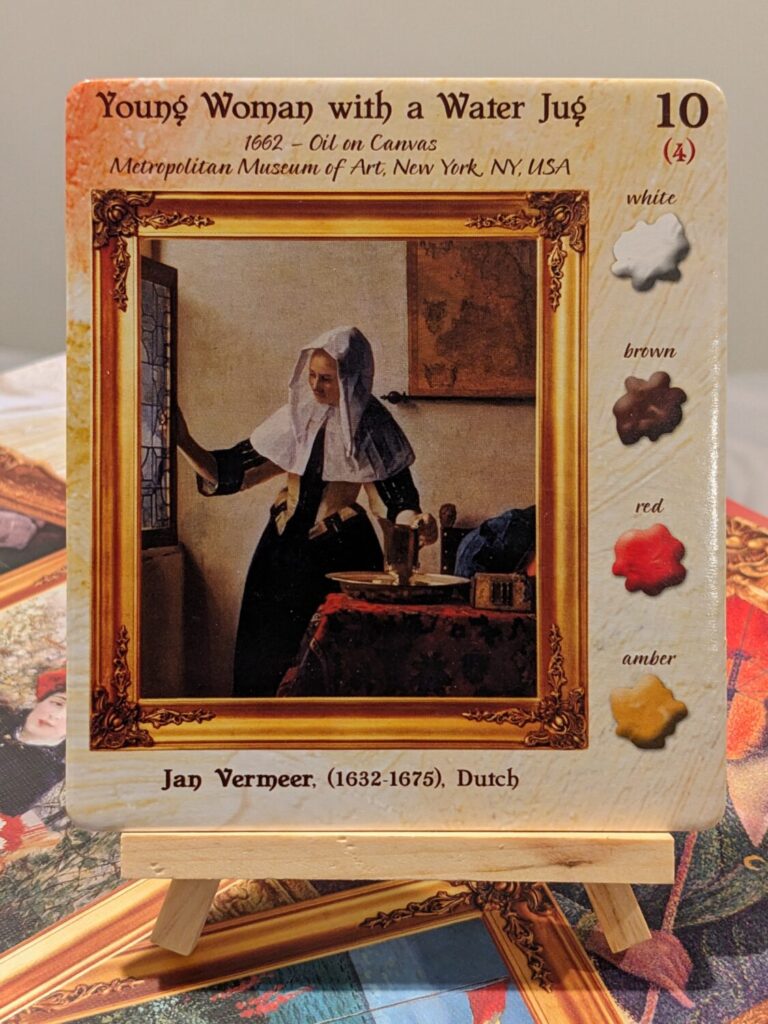
Pastiche: What Is It?
Pastiche is a set collection, tile placement and trading game for 2-4 players. I did a single play with my wife and 11-year-old, and the 11-year-old won without any help at all. That gave it a very family-friendly feel and a very easy teach, a teach so simple that I used the included player aid tiles to show my family the game.
Players must race to complete a number of commissioned artworks before other players can do the same thing, 34 of which have been pulled from European artists of the last 500 years. To recreate each artwork—pictured on large tiles using easels similar to the ones found in later games like The Gallerist—players use their turns to place one of their two hex tiles into a central play area. This placement triggers color combinations that are spit out in the form of cards that are then added to a player’s hand.
Using these cards—ranging from primary colors to secondary colors like teal and magenta to simple blacks, whites and grays—each player tries to fulfill the recipe of either a commission from their hand or from a four-commission display available to all players. Instead, players can try to trade their color cards with other players, making CATAN-style deals that benefit both parties.
Once completed, players earn points (ranging from maybe 5-15) for each commission, and when a player reaches about 40 points—varying by player count–the final round is triggered and the player with the most points wins.
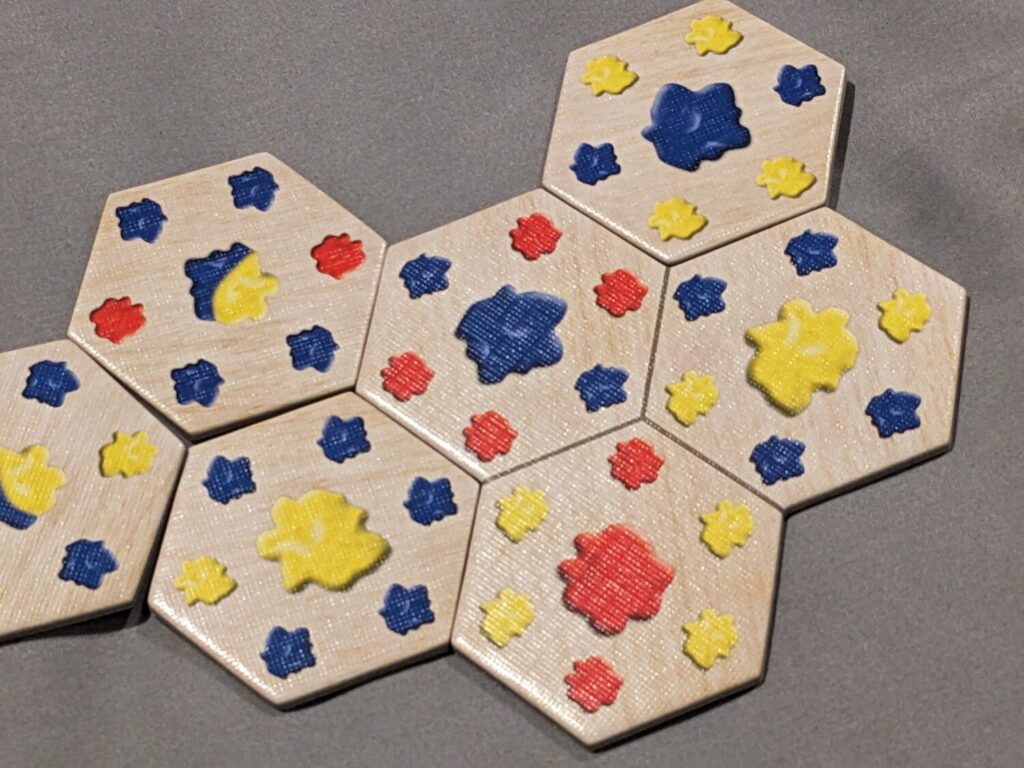
Past Tense
Pastiche became a very interesting touchpoint at the Bell compound.
When I got it to the table, my wife and child both looked at me during the teach like playing Pastiche was going to be the worst idea ever. But just two turns in, the 11-year-old announced that they “love the theme of this game.” Not surprisingly, they are also the best artist in the house and they loved placing tiles just so, in order to trigger the right color combinations to spit out the cards that fulfilled commissions the fastest.
My wife and I struggled a bit with finding spaces in the central tile placement puzzle for our tiles, particularly when trying to create “tertiary” colors like purple or magenta, or finding quick ways to make bisque or those frisky white and black cards. But that was our problem, and I like that the game’s included player aid does such a great job of laying out the requirements for each color so that luddites like myself can follow along.
The game’s arc is not that interesting; Pastiche is Pastiche. Every turn looks the same, and trading cards became vital to moving certain colors out of my hand to get other combinations for the commission tiles. Save for trying to not set other players up to connect their tile to four intersections instead of the normal three to gain color cards, turns mostly consisted of quietly gathering cards then converting some into the colors needed to knock out a tile. I did appreciate that a player might be able to spend cards against one of the public commissions or one from hand, to provide flexibility in case one or the other was suddenly not a fit for my cards.
Pastiche also runs a little long; our three-player game took about an hour after my teach. For a game this procedural, it felt a little long in the tooth. I think that is also why Pastiche is already set to be given away—although it sat on my kitchen table for nearly two weeks after our first play, my 11-year-old never wanted to play it over other games that were suggested by the family, ranging from simple card games to CATAN: Cities & Knights.
“I liked Pastiche,” they said when I asked one final time before drafting this article. “I just didn’t need to play it again right away.”
Designed by Sean MacDonald and published by Eagle-Gryphon Games, Pastiche feels like a game from another era in almost every way. If you and/or members of your family like games with a classic art feel, Pastiche is worth a look!


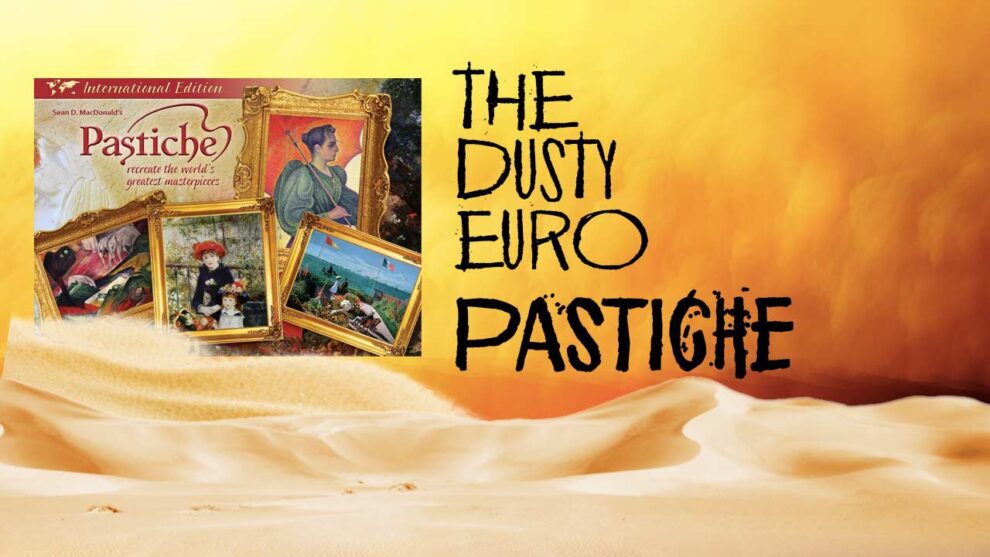
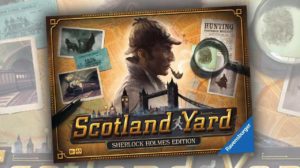
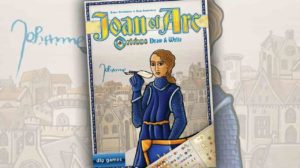
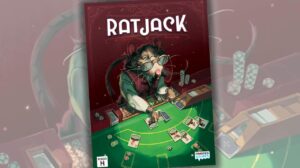



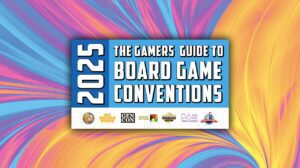

Add Comment